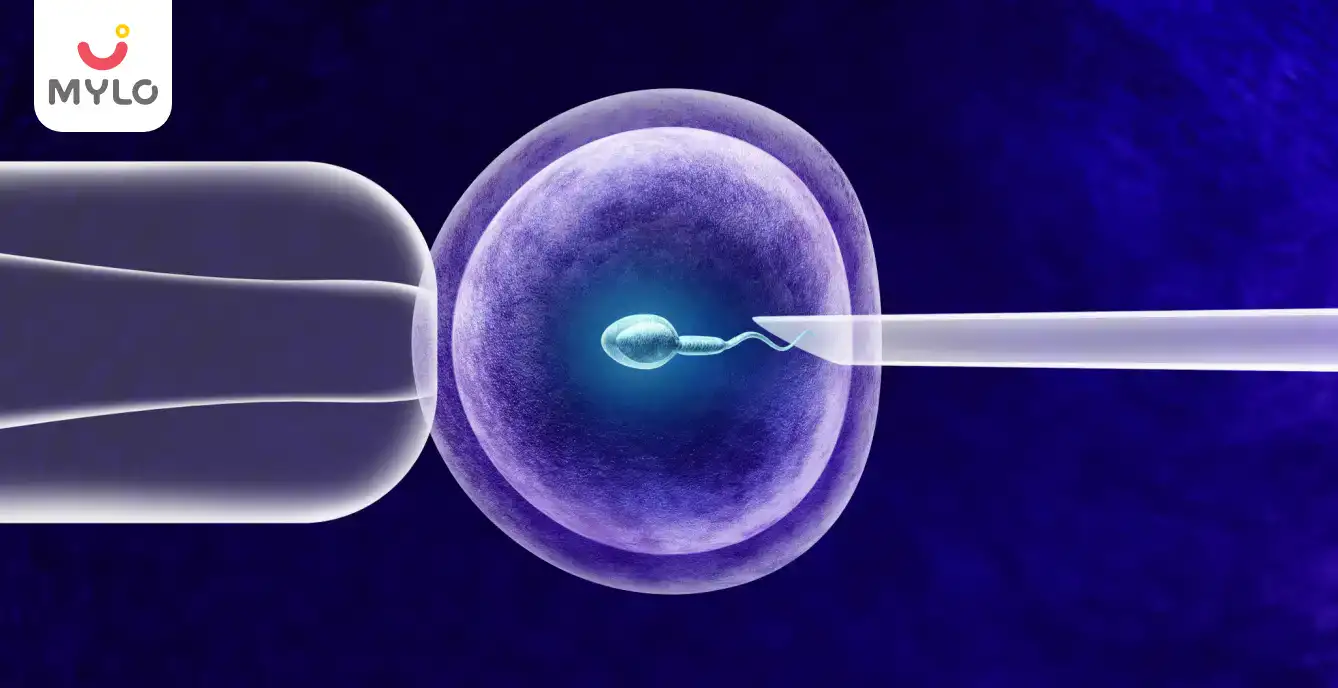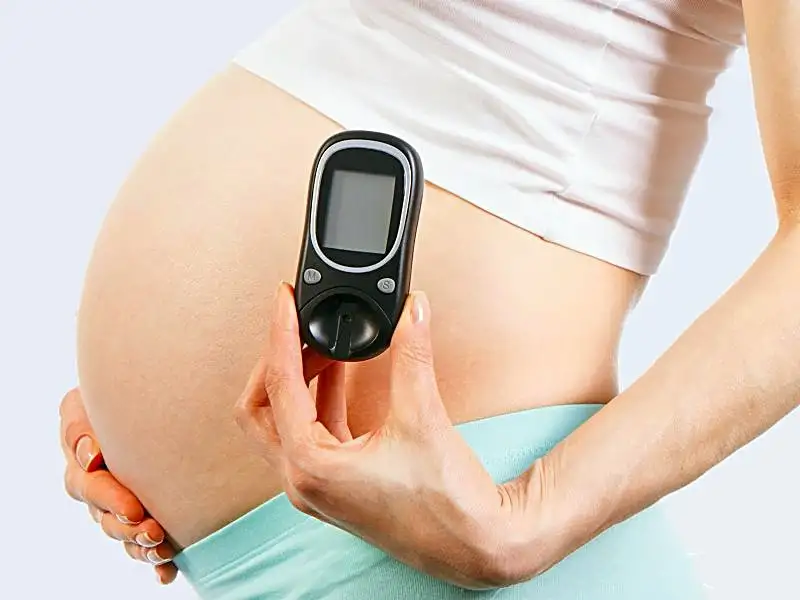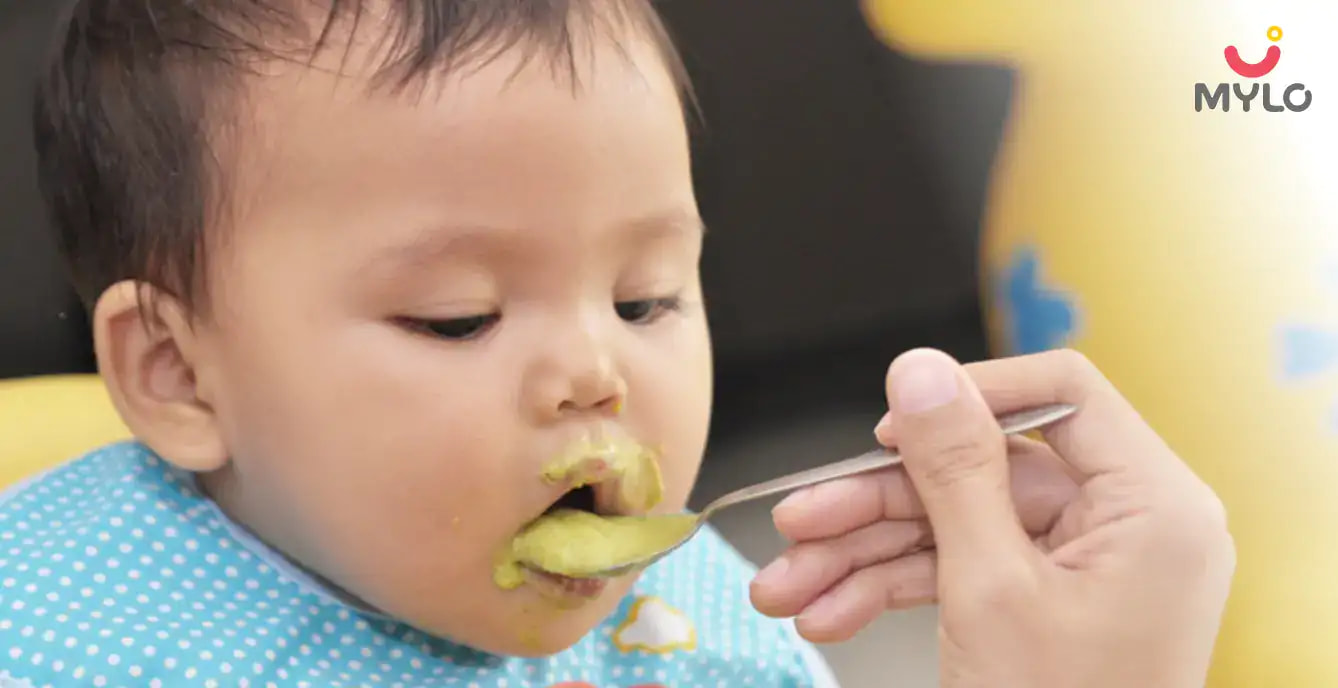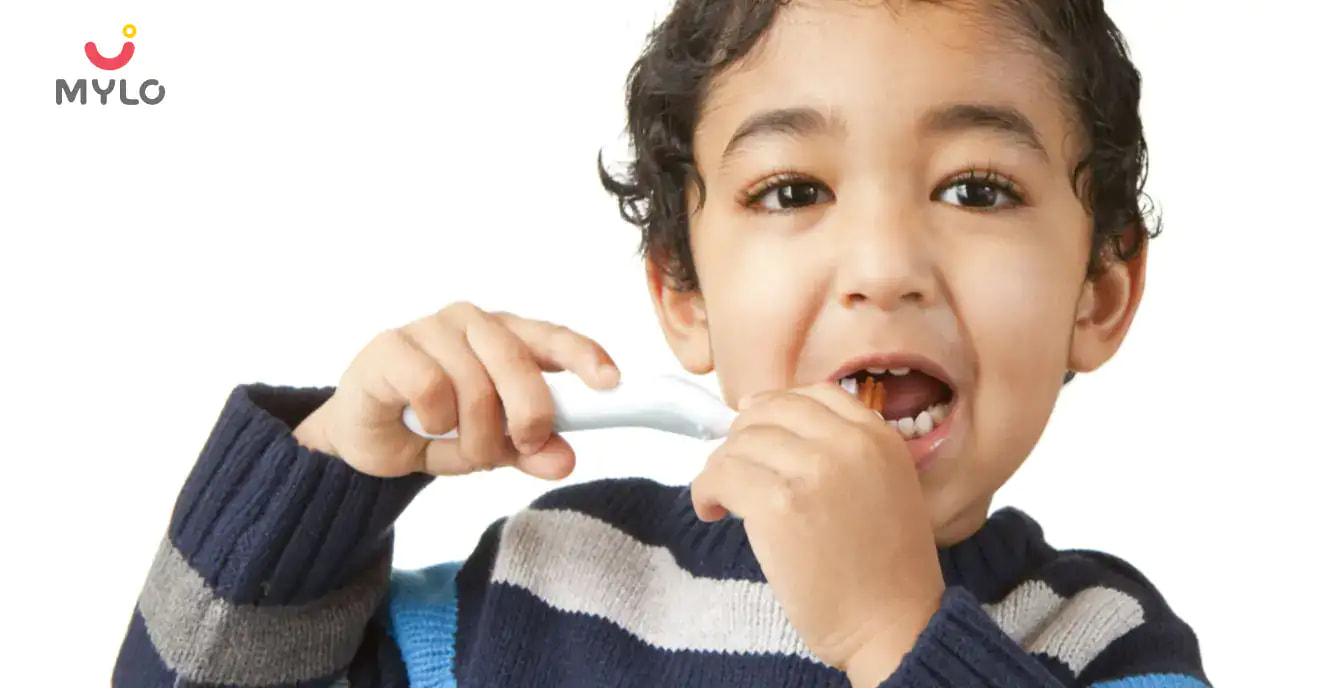Home

Starting Solids

Is Baby Ready for Solid Foods? (Developmental Signs of Readiness)
In this Article

Starting Solids
Is Baby Ready for Solid Foods? (Developmental Signs of Readiness)
Updated on 23 November 2022
From ancient ages to modern science, it’s unanimously accepted that solids must not be introduced until the baby’s digestive tract is mature enough to handle it. Most babies are developmentally ready for solids somewhere between 6 to 8 months and perhaps that’s the reason behind “Annaprashan” ritual being performed in the Indian culture around this age.
Signs Your Baby is Ready for Solid Foods
Now let’s understand 6 such telltale developmental signs that indicate your baby is ready for a taste change and for you to set bite size milestones for their further growth.
- Baby develops the ability to hold his/her head up consistently for long periods.
- Baby is able to sit fully upright without any support.
- When the baby stops automatically pushing solids out of his/her mouth with the help of the tongue, which is termed as tongue-thrust reflex.
- Baby shows a willingness to chew.
- Baby shows another developmental sign of a “pincer” grasp. This means he/she is trying to hold an item with their index finger and thumb. With this object-grabbing skill, he/she picks up food or other objects between their thumb and forefinger.
- Baby shows a willingness to join in the family meals and tries hard to grab food and put it in his/her mouth.
A rough estimation (although not backed up scientifically) says that babies are usually ready for solids when they are typically double the size of their birth weight. Nevertheless, this estimation can’t be the sole basis and should only be considered along with other developmental signs.
It is also evident that as soon as the baby is grown enough to become aware of the world around him/her, they also become fascinated by food. Gazing at food objects, trying to grab and feel them and opening their mouth in anticipation to taste a bite are also significant developmental signs of readiness for solids.
How to Introduce Solids to Your Baby?
You can help your little one discover solid foods and grow their interest in healthy foods using the following tips:
1. Find the right time
It's important to choose a time that works well both for you and your baby. After you've given the first course of breast milk or formula milk to whet your little one's appetite, offer them some solids. Gradually, increase the offerings of solid foods.
2. Identify the right mood
You may want to avoid introducing solids to your baby when they are cranky, sleepy or fussy. An incoming spoon of food will be more enticing to your little one when they are alert and cheerful.
3. No need to rush
When it comes to food, haste definitely makes waste. Feeding one teaspoon at a time and practicing daily will help you and your baby finally establish a feeding routine. Try to be patient with your baby.
4. Practice sitting
Sitting in an uncomfortable position and trying to feed your baby solids for the first time may not be the best way to go. Familiarize your baby with a feeding seat or high chair for a few days and once they are comfortable, then gradually introduce solids to them.
5. Pick the right utensils
Your baby may have been born with a silver spoon but there's no need to feed them with it. A soft silicone or plastic spoon and a soft bowl will be much easier on your baby's delicate gums. Allow your baby to make use of their hands.
6. Time for friendly introductions
After you have practiced the above steps, it's time to introduce your baby to their first foods. Instead of bringing a spoon to their mouth, try putting some of it on their table or high chair tray and let them examine it, mash it or squish it. It may get a little messy but it's the best way to teach your baby to feed themselves.
Please also remember that even after you start solids, breast milk or formula must be the primary source of nutrition so, try to continue breastfeeding for at least a year.



Written by
Priyanka Verma
Priyanka is an experienced editor & content writer with great attention to detail. Mother to an 11-year-old, she's a ski
Read MoreGet baby's diet chart, and growth tips

Related Articles
RECENTLY PUBLISHED ARTICLES
our most recent articles

In Vitro Fertilization (IVF)
Which Is Better For You: IUI Or IVF?
Getting Pregnant
Are you wondering how to deal with infertility sadness? Here are 8 important tips that will help you out.
Travel & Holidays
Travel Tips to Follow During The First Trimester of Your Pregnancy

Blood Sugar Levels
Top 7 Diet Tips to Control Your Sugar Levels During Pregnancy

TV & OTT
Best Action Movies On Amazon Prime

Pregnancy
How can a pregnant woman get 6000?
- What Are the Common Tests You Will Have During Your Pregnancy?
- 4 week pregnancy discharge
- Frequently asked questions about milk production
- Is Maternity Leave 6 Or 9 Months?
- Top 5 Most Common Skin Care Myths Busted
- What are the Top Worries and Fears After Childbirth and How to Overcome Them
- Is It Really Essential for People to Wash Their Hands Before Holding a Newborn?
- Top 10 Hollywood Movies on Hotstar
- How Can You Easily Determine Using Seven Easy Homemade Remedies to Check if You’re Pregnant or Not?
- Best Crime Series On Amazon Prime
- Everything You Need to Know About Linea Nigra, the Line Around Your Belly
- Know Why Your Doctor May Change Your Due Date During Pregnancy
- 6 Ways to Protect Your Baby During Cold Season
- Are You Aware of These Warning Signs That You Should Be Careful of During Your First Trimester?


AWARDS AND RECOGNITION

Mylo wins Forbes D2C Disruptor award

Mylo wins The Economic Times Promising Brands 2022
AS SEEN IN
















- Mylo Care: Effective and science-backed personal care and wellness solutions for a joyful you.
- Mylo Baby: Science-backed, gentle and effective personal care & hygiene range for your little one.
- Mylo Community: Trusted and empathetic community of 10mn+ parents and experts.
Product Categories
baby carrier | baby soap | baby wipes | stretch marks cream | baby cream | baby shampoo | baby massage oil | baby hair oil | stretch marks oil | baby body wash | baby powder | baby lotion | diaper rash cream | newborn diapers | teether | baby kajal | baby diapers | cloth diapers |








